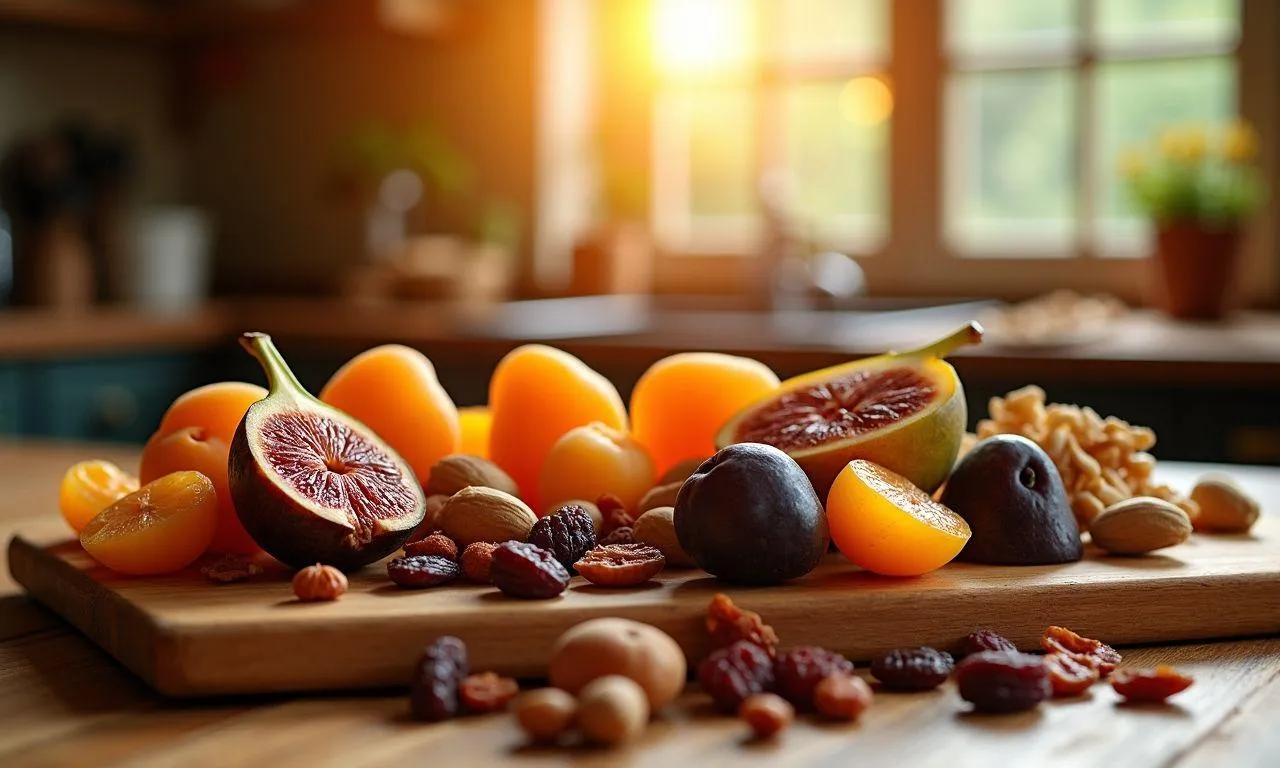- David Janitzek
- October 23, 2025
- 4min.
- Report
Dried Fruits and Nuts – The Perfect Snacks for Breakfast!
Dried fruits and nuts are often associated with the holiday season, as they are added to pasta and other holiday desserts. This category of snacks includes dried fruits such as raisins, figs, dactyls, plums, morels, as well as nuts. They can make a perfect snack for your morning coffee or tea, and are a healthy alternative to sweets. However, it is important to remember that dried fruits and nuts are quite calorific – 100 g of dried fruit has about 300 calories, and 100 g of nuts has 600 calories. Therefore, it is recommended to consume them in moderation, instead of unhealthy snacks.
Table of Contents
1. How to accurately select dried fruits?
The variety of products available on the market is vast. However, if we want dried fruits to be a healthy food choice, we must pay attention to the presence of preservatives and sugar in their composition. Dried fruits are often treated with sulphur, which can irritate the digestive system and trigger migraines in sensitive individuals. To accommodate allergy sufferers and sensitive individuals, many manufacturers refrain from using preservatives in their products. The process of drying the fruit is, in itself, a method of preservation. If sulphur-free dried fruits are not available, it is advisable to soak them before consumption. Such fruits serve as the best source of dietary fiber, which helps safeguard against colon cancer. Due to dehydration, they provide a more concentrated source of nutritional value than fresh fruits. Upon comparing the ORAC value, which measures the ability to eliminate free radicals, dried fruits often exhibit antioxidant properties that are more than twice or thrice as potent. They are a source of potassium, which we consume in insufficient quantities compared to sodium. Consequently, dried fruits help rectify these deficiencies and aid in lowering blood pressure.2. Raisins are a component of a healthy diet and should be consumed frequently
Raisins are crucial for health due to their iodine content, which is necessary for the synthesis of thyroid hormones. They also impact metabolism and hormonal regulation. They contain boron, which is responsible for the proper integration of calcium and magnesium in the bones. Raisins also contain anthocyanins and resveratrol, which are found in grapes, translating into their anti-inflammatory, anticancer properties and ability to lower cholesterol and prevent constipation.3. Dried fig
A mere 100 grams of dried figs contain essentially the same level of calcium as a glass of milk. Therefore, dried figs are recommended for individuals with lactose intolerance, older people, postmenopausal women, and vegans. They also constitute an excellent source of dietary fiber. The antibacterial properties of these fruits support, among other things, the treatment of stomach ulcers.4. Desiccated plums and morels
Desiccated plums and morels represent a considerable source of iron. A handful of desiccated plums or morels can contribute to the prevention of anemia. Furthermore, morels are a significant source of beta-carotene, which provides protection against free radicals.5. Edible nuts and mushrooms
Edible nuts differ significantly in their nutritional values. All contain large amounts of B-vitamins, magnesium, manganese, and other elements. Walnuts are particularly rich in essential omega-3 fatty acids, which are necessary for building cell membranes, proper functioning of the nervous system, and prevention of inflammatory states. Almonds are an excellent source of vitamin E, which is present in very small amounts in food and protects fats from unwanted oxidation processes. They also contain up to 20% protein and can be an important source of amino acids, especially in a vegetarian diet. Hazelnuts are not only a tasty snack but also a rich source of vitamin E and magnesium. Pecans, although containing the least amount of fatty acids, are a good source of zinc and iron, which are essential for the health of the body. The most fascinating, however, are still the little-known Brazil nuts, which are the best source of selenium in the diet - consuming just one nut can meet the daily requirement for this mineral. Selenium supports the immune system in fighting viruses and is essential for the functioning of the enzyme glutathione peroxidase, which protects cells from free radicals that contribute to the development of cancer. Dried fruits are a valuable source of vitamins, minerals, and fiber. They are an excellent snack and can also be used as an ingredient in dishes. However, it is important to note that they have a relatively high calorie content. A handful of nuts, such as walnuts or hazelnuts (30g), provides 200 kcal. A handful of dried cranberries (40g) is about 130 kcal, while raisins (30g) are about 90 kcal. Therefore, it is important to enrich the diet with dried fruits, but also to prepare balanced meals. The recommended amount of dried fruits depends on individual parameters and goals (normal-energy diet, reducing diet, increasing body weight). However, excessive consumption of dried fruits can lead to discomfort and over-provision of energy, which can lead to problems with overweight.
Latest Nutrition Plans

Express Shape – 1600 kcal Protein Nutrition Plan – 3 Weeks to a Healthier You

Accelerated Transformation - a protein-rich plan with 1600 calories for 14 days

Revolutionize Your Body - A 7-Day Fast Protein Plan for Extraordinary Weight Loss

Ultra-Low Carb Adventure - A 4-Week, 1600 kcal Plan for a Lighter, Healthier You

Energize Your Life - A 4-Week High-Protein Slimming Plan with 1500 kcal for Energy and Weight Reduction

Sven's Plan - A 4-Week, 1500 kcal Slimming Program for Healthy Energy and Transformation

Express diet 1300 kcal - quick reduction in 4 weeks according to Sven

Step Up Your Life - A 4-Week, 1400 kcal High-Protein Slimming Plan

Fit Body - A 4-Week, 1400 kcal Healthy Slimming Diet for Optimal Results

Slim Plan 28 - A 28-Day, 2000 kcal Weight Loss Plan for Optimal Results

Dream Shape - A 4-Week, 1800 kcal Weight Loss Plan for Lasting Change.

Protein Power 4 - A 4-Week, 2200 kcal High-Protein Diet for Energy and Optimal Weight Loss

